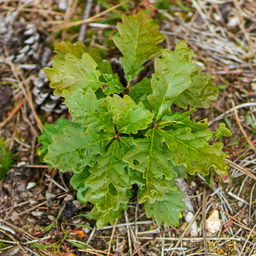May 8, 2025
Timber in construction: building with nature, not against it
Explore how EcoTree’s nature-based forest management turns timber into a renewable, climate-positive material for greener, more responsible construction.

Our work is rooted in nature-based solutions: we work with nature and adapt to its pace. Through sustainable forest management, whether through reforestation or afforestation, we strive to regenerate healthy, resilient forests that serve as natural carbon sinks and restore ecosystems. Our approach actively supports biodiversity, enhances local resilience, and provides renewable resources in the long run, but always within ecological limits.
We do not practice clear-cutting; instead, we selectively harvest mature trees, maintaining the integrity of the forest as a living ecosystem. This responsible approach makes timber a valuable material when used wisely. Cutting trees doesn’t harm the forest - it supports natural regeneration processes. Our foresters open the canopy carefully, allowing sunlight to reach the forest bed without exposing the ground too harshly. We plant saplings when natural regeneration is slow or when introducing climate-resistant species. From this responsible approach, timber becomes one of the most valuable natural materials we can offer, especially when used wisely.
Timber’s untapped potential in construction
There’s growing evidence that timber can play a crucial role in the transition to more sustainable construction. According to research from Bauhaus Earth (2023), if 90% of new buildings worldwide were constructed using timber, it could save over 100 billion tonnes of CO₂ emissions by 2100, over a third of the remaining carbon budget needed to keep global warming below 1.5°C. To put that into perspective, the world currently emits around 40 billion tonnes of CO₂ annually. This saving would equal more than 2.5 years’ worth of global emissions.
Another study from the Department of Forestry at Mississippi State University in 2020 found that using mass timber in place of conventional building materials, like steel or concrete, can reduce emissions from the construction phase by an average of 69%, which corresponds to 216 kg CO₂e per square metre of floor area. Using mass timber in just half of all new buildings worldwide could deliver up to 9% of the emissions cuts required by 2030.
These highlight a major opportunity: to reduce emissions and lock carbon into buildings for decades instead of releasing it into the atmosphere.
Source: Figure 8.17 in Birkmann, J. et al (2022). Poverty, Livelihoods and Sustainable Development. In: Climate Change 2022: Impacts, Adaptation and Vulnerability. Contribution of Working Group II to the Sixth Assessment Report of the IPCC.
But let’s be clear - Forests are not timber farms
The forests we manage are not mere plantations; they’re ecosystems. Our forests are managed as ecosystems first; timber is a by-product, not the end goal. In 2015, 63% of all wood used in the EU was allocated to bioenergy, a trend that remains prevalent today. However, using wood primarily for energy is a short-term application that underutilises its potential. Redirecting more of this resource toward long-lasting uses, such as construction, could yield significantly greater climate benefits by storing carbon for decades while reducing emissions. When this is done responsibly, it can create a powerful synergy between forest regeneration and sustainable construction.
When used wisely, timber is one of the most promising biobased materials we have. It’s not about replacing forests with buildings; it’s about letting forests help us build more responsibly.
At EcoTree, we invite you to be part of the solution by investing in sustainable forest management and ecosystem restoration. Whether through reforestation projects, supporting biodiversity efforts, or becoming a tree owner, you can help ensure that timber remains a responsible, climate-positive resource for the future.
Keep on reading!
- Discover how timber supports greener building practices
- Learn about peatlands and why they are important carbon sinks
- Explore how companies can commit to a carbon contribution strategy











